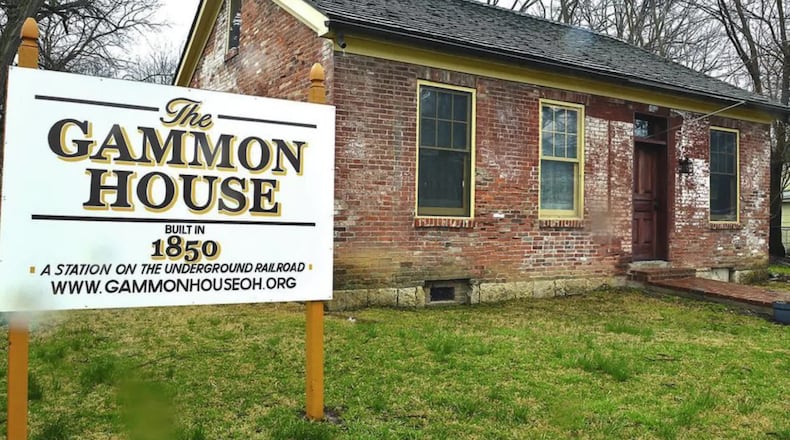“This designation and inclusion to the Ohio Historical Underground Railroad Trail is an exciting moment in the history of this home,” said Dale Henry, president of the Gammon House. “We recognized many years ago that this house was a special place with a unique history, and now we are just overjoyed that others are acknowledging that, Gammon House is, in fact, on the main line of the Underground Railroad in Ohio.”
George and Sarah Gammon built the house in 1850, the same year Congress passed the Fugitive Slave Act, and provided shelter, food and clothing for slaves on their journey to freedom, Henry said. The Gammons raised seven children, and their eldest son, Charles, served in the 54th Massachusetts Regiment in the Civil War and was killed in action two days before the assault on Ft. Wagner, S.C., in 1863.
“This house is one of only three safehouses still in existence in Ohio that were owned by a family of color,” he said.
Since 1998, Henry said they have worked to promote the house and its history, including celebrating Juneteenth and sharing the Gammons’ story.
“We have been engaged in the work of restoring and presenting the house as a significant landmark in the African American community with hopes of developing an Interpretive Center,” he said.
The new trail was launched in conjunction with International Underground Railroad Month, which is designated in September after Gov. Mike DeWine signed House Bill 340 on June 14, 2022.
“It is important that we remember the legacy and impact of the Underground Railroad on this country, as well as Ohio’s prominent role in its operation,” DeWine said. “We’ve created this new trail to show both visitors and Ohioans how to learn more about Ohio’s history as an important connector on the Underground Railroad.”
The 15-stop trail across the state highlights Ohio’s legacy and involvement with the historic network, and the people who assisted others to freedom from slavery. It makes it easier for interested visitors to find the destinations and organizations related to the underground railroad.
The locations for the trail were selected to focus on Ohio’s Underground Railroad sites, because they directly relate to either the Underground Railroad or known abolitionists in Ohio, and it includes places that are open to the public, host tours and provide educational or experiential elements for visitors.
“There is so much important history in Ohio,” Lydia Mihalik, director of the Department of Development, which oversees TourismOhio, said. “The work of the organizations and destinations featured on this map is invaluable to preserving our history, and I’m so glad we get to put them in the spotlight.”
For more information, visit the trail’s page at Ohio.org/UGRRTrail or download the map directly.
About the Author

